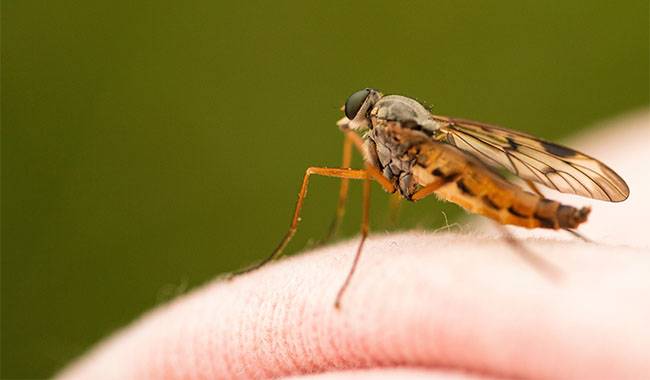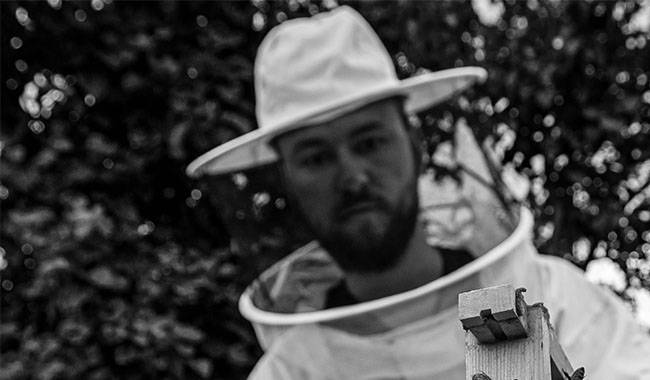
Vacations in the countryside and in nature can easily be ruined by blood-sucking insects. Mosquitoes are painful and infesting. Ticks are inconspicuous, but they carry dangerous diseases such as bunions and encephalitis. Mosquito bites on your eyes, ears, and nose hurt, and large numbers of bites can cause allergic reactions or symptoms of poisoning. Elk flies are less well-known and less common, but they can also transmit bunt disease. The good thing is that we live in the 21st century and there are many ways to protect ourselves from this insect. You will learn more about How to Protect Yourself from Insects While Camping by LCN Outdoors article.
Tip: By the way, there are no mosquitoes in Iceland or the Faroe Islands. How did your summer feel in the Faroe Islands? Did you sleep well? No buzzing in your ears? We had a buzz and it felt great, come see us!
There are three ways to protect yourself from bloodsuckers.
- Use the toxic effects of various chemicals.
- Hide your skin under a cloth or net so the insects won’t bite.
- Combine these two methods.
Insect Repellents
When it comes to insect control, insect repellents are the first thing that comes to mind. The market is crowded with choices from different manufacturers. Some work, some don’t work so well. Some are suitable for children and people with allergies, some are not.
Spray from midges and mosquitoes
To choose the right spray, you need to read its ingredients. You will find one of the following active ingredients.
a. DEET
DEET is the most common and effective element in mosquito sprays. It was created in the mid-20th century for the U.S. Army, whose soldiers often found themselves in the jungle. DEET, which stands for diethyltoluamide. In the Soviet Union, it was known as a canned “mosquito repellent”. The substance was effective against mosquitoes, midges, gadflies, and gadflies.
DEET is a toxic substance. When choosing a product based on it, look at the ingredients. The content of the active ingredient.
1.40% or more – the product is suitable for spraying on clothes only.
2.20-30% – The product is suitable for application on adult skin.
3.10-15% – The product is labeled as suitable for use on pregnant and nursing women and children.
It is also important not to use DEET on synthetic fabrics and equipment. the oil-based base can damage polyurethane covers on nylon tents and tents, backpacks, and clothing. Insect repellents in the form of sprays, lotions, or aerosols are the first insect repellents that come to mind.
b. Icaridin
Icaridin, also known as picaridin, this substance is a recent invention – first used in Canada in 2012. Its other name is icaridin. it has the same protective properties as DEET. Judging from the reviews of foreign visitors, it has a more pleasant texture when applied to the skin and does not react when interacting with synthetic fabrics. Products containing icaridin are not commonly available in the United States.
c. Ethyl butylacetylaminopropionate (IR3535)
A rare substance in insect repellents. ethyl butyl acetylamino propionate, trade name IR3535. is considered to be very effective in repelling mosquitoes, lice, gnats, gadflies, and gadflies. It has a mild texture and is hypoallergenic, so it is mainly used in children’s lotions and sprays. ir3535 is a relatively new product and is rarely used.
d. Natural essential oils
For example, vanilla, clove, or orange oil. Their pungent scent deters insects. However, they are not as effective as the products mentioned above: they are only adequate in areas where blood-sucking insects are rare. These oils are usually found in anti-mosquito sprays and lotions for children.
Mite sprays
A substance like permethrin or cypermethrin is used to control mites. It not only repels the insects but also kills them. It is a nerve poison that easily penetrates the insect’s body, blocking the transmission of nerve impulses and paralyzing them. When applied to the surface of a fabric, its effect can be maintained for a long time – up to 20-30 days. It is effective not only against mites but also against various garden pests.
It is important to note that permethrin is toxic to humans. When in contact with skin or mucous membranes, it can cause coordination disorders, seizures, and increased salivation. This is because cypermethrin penetrates cell membranes and disrupts the transmission of nerve impulses. Therefore, it may only be suitable for clothing and equipment.
How to pre-empt a tick bite and what to do if it does bite are explained in detail in this blog post.
Candles, Fumigators, And Smoke Bombs

Candles, fumigators, and smoke bombs are useful when you need to protect a relatively large area from insects – a porch, campfire, or tent in the countryside.
Candles
Candles are usually made in spiral form and are made from wood powder impregnated with active ingredients. It evaporates into the air along with the smoke produced by the burning candle. The area covered by a candle is very small. Usually, it has a radius of no more than 10 feet (3 meters), adjusted to the wind direction. However, you can use several candles to cover the desired space.
The active ingredient in these candles is allyl pyrethrin. It was first synthesized in the United States in the mid-20th century from the essential oil of chrysanthemum. Allyl pyrethrin is less toxic to humans and the environment than DEET and permethrin. It is mainly effective against mosquitoes and gadflies. Exposure to isoproterenol quickly leads to paralysis and then death. In contrast to cypermethrin, allyl cyhalothrin is effective only when evaporated by heat. Once deposited on a surface, it stops working. This is why sprays containing isoproterenol are very rare.
Fumigators
Fumigators work in the same way as candles, except that they do not emit smoke, but heat a plate impregnated with Alitrin. They usually cover a larger area than candles. But most fumigators are powered – you can’t take it camping with you.
But there are also portable, freestanding fumigators. They heat a repellent plate by burning gas supplied by a small gas cylinder in its housing. They are ignited with a piezoelectric igniter. The repellent in their plates has a rather subtle, pleasant odor. And there are even plates for hunters. The repellent in them smells of the earth so that the animals don’t notice the presence of humans. The gas tank and three plates in this fumigator can work continuously for 12 hours, and the device itself weighs about 330 grams.
Smoke bombs
Smoke bombs are needed when you need to treat an impressive space – an open meadow or a large room – in a short period of time. They are ideal when preparing camping sites or large event tents. Their active ingredient is permethrin. It is emitted from the tent as smoke when lit. Tents are smoked for 4-5 minutes. During this time, a tent can be filled with up to 1308 cubic yards (1000 cubic meters) of insect repellent. The substance is effective for 3 to 14 days, depending on whether it is indoors or outdoors, the presence of moisture, and the presence of wind when burning the briquettes. Cypermethrin is not toxic to humans as long as it does not come into contact with skin and mucous membranes. Therefore, treatment should be administered in the absence of people and handlers should take care to protect the skin and respiratory tract.
Do not abuse smoke bombs: Permethrin is toxic not only to mosquitoes and gnats but also to other insects. Do not disturb the environment. It is best used to treat enclosed areas – large tents and tepees – rather than open sites.
Insect-proof Clothing
Clothing can be used to reliably protect against gnats, gadflies, and mosquitoes, especially if the clothing is made from fabrics containing repellents. The threads used to make the fabric for shirts or pants are impregnated with permethrin. This is done in production and such a process cannot be repeated at home. As a result, the fabric repels insects and can be washed and ironed: the compound will not be washed out during the entire life cycle of the garment. Just don’t give it to the dry cleaners.
Clothes impregnated with insect repellent at the factory don’t look any different from ordinary clothes. But repellent will not wash off, unlike sprays sprayed on fabrics at home.
When using such clothes, remember to fasten the cuffs on your hands and ankles, otherwise, mosquitoes or gadflies will get in under the sleeves and pants. Therefore, if you are traveling to a mosquito-infested area, you should choose a long-sleeved shirt and long pants with cuffs underneath. By lowering your sleeves, lifting your collar, and wrapping your cuffs around your boots, you are effectively protecting yourself from insects, sunlight, branches, and thorns.
For those who can’t or don’t want to apply for skin protection, insect-proof clothing is a great option.
Mosquito Net Hat And Mosquito Net

Mosquito net hat and Mosquito net are one of the oldest methods of protection against blood-sucking insects. They work effectively by creating a space around your body or face. mosquito net hat is a net attached to your headpiece that covers your face and neck. The net can be hidden in a pocket on a Panama hat or cap, or attached separately. The netting is thick enough to keep mosquitoes out.
Mosquito nets in tents and hammocks that extend under awnings are there to protect you from mosquitoes while camping. By the way, the interior of the tent can even be pitched up during daytime camping to stop bugs from pestering you. The big winners here are inner-frame models with wide mosquito nets – they don’t let air in and provide a clear view of the surrounding countryside. So a well-chosen tent will not only give you a good night’s sleep but will also give you peace during the day when you’re camping.
Sometimes the only way to have a peaceful camping trip is to pitch a tent inside and hide from the swarms of mosquitoes inside.
We have now looked at the basic methods of keeping blood-sucking insects at bay. Which method you use and how you combine them depends on your tolerance to the active ingredient, the number of people in your group, and whether you protect yourself from insects indoors or outdoors.